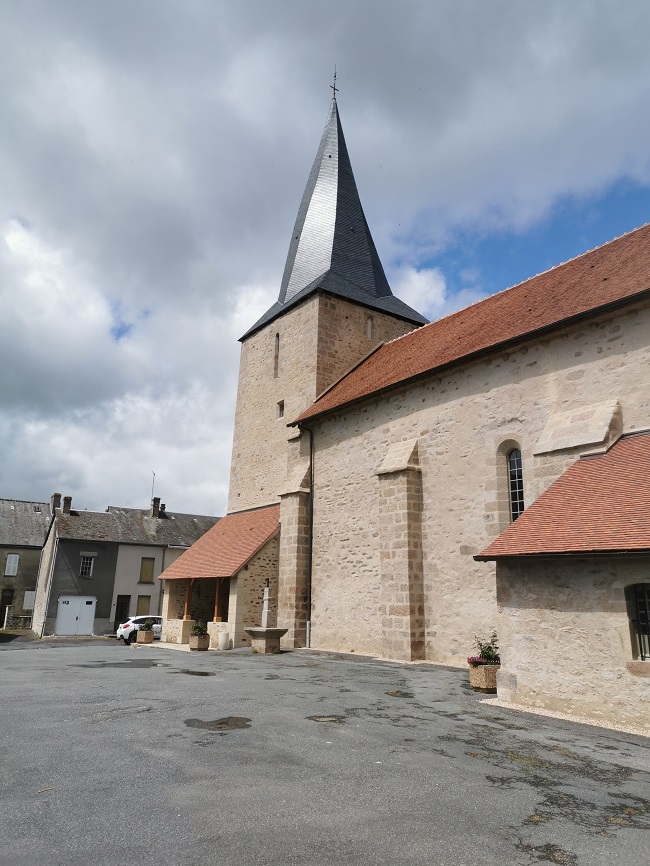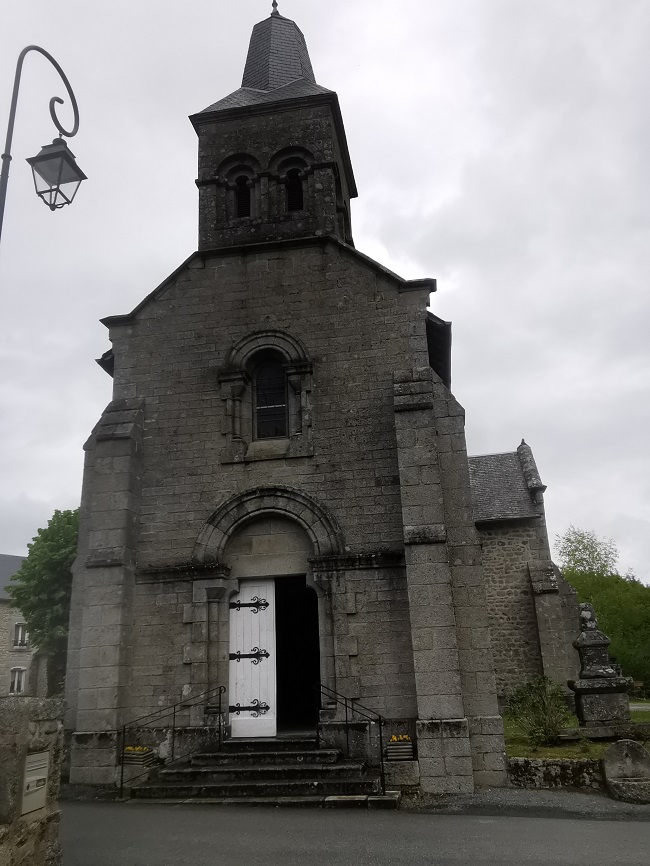The Stonemasons of Creuse

Curious travellers to the tranquil Creuse will have noticed the little stone churches in the area. Some dot the countryside while others stand proudly on their village squares but do you know the history of the stone masons behind these beautiful buildings?
Martin Nadaud’s name is synonymous with the ‘masons of the Creuse’. Son of a peasant family, he was born in 1815 in La Martinèche, in Creuse, a village at the foot of the Limousin mountains. In March 1830, at 14 years of age, Martin joined his stonemason father and uncle for the first time on the long walk to the building sites of Paris. His father, an enlightened man, had ensured that Martin Nadaud learn to read and write. Little did he know that later in life his son would become a prominent politician passing important social laws that are still relevant in France today. He became the voice of the migrant workers, the stonemasons of the Creuse, whose tradition goes back centuries. There are schools named after him, a square and a café in Paris and for a while a metro station bore his name. His home in Soubrebost in Creuse, to which he returned in later life, is now a museum in which his personal, professional and political story is told.
Places like Provence or the Loire with its châteaux and vineyards are well known, but for many the Creuse is ‘somewhere down there in the middle of France’. Yet it holds a very important part in France’s past and has left a lasting impression on the heart and soul of the nation. Its land was infertile and stony so the men had to learn to work with stone and by the middle of the 15th century, these stonemasons were already renowned for their work on churches and cathedrals They were ready to travel wherever their skill was needed. Today, their history lives on in the sturdy stone cottages and beautiful stone churches of the Creuse which stand alongside the grand basilicas as monuments to the skill of the men who created them

© Anne Price
The first migrant workers
After the French Revolution, building was disrupted and life was difficult for the masons at home on their impoverished small-holdings in central France. Napoleon initiated new projects and the masons once again began their annual migration to the larger cities. They set off in spring, taking the Creuse with them maintaining their own dialects, customs and food, always returning in November with money for their families. They faced danger from thieves and they soon learned in Paris to fight and defend their savings. To lose the money would have condemned their families to poverty.
They became the first model of the migrant worker in France. With men like Martin Nadaud fighting for their rights, the masons of the Creuse became well known for their left-wing republicanism and their growing antipathy towards the Catholic church which once held such an important position in people’s lives. Many still see stonemasonry as a vocation. “That is one of my walls,” my neighbour Jean-Pierre proudly informs me as we pass a beautiful, arched, stone entrance to a pretty village house. He is still often seen renovating a neighbour’s wall or building a new one.

© Anne Price
The forgotten churches of Creuse
The powerful Roman church continued its dominance right up to the French Revolution. Many of the villages scattered throughout the rolling Creuse countryside still have at their heart a beautiful Medieval church under whose stone walls the dwellings huddle together like children clutching at the skirts of their mother. In times past, Mother Church kept order and discipline in the lives of its congregation instilling in children respect for God and State. Today, the churches now stand empty, awakening a desire in the curious to discover France’s turbulent religious past. The occupants of the once bustling villages have dwindled away, with few remembering when their churches were full on Sundays. “As children, we had to go to church every Sunday and during religious festivals,” Mireille and Dani, elegant septuagenarians recall. “We had to wear a white dress and recite the Catechism when we were confirmed.” Today, flocks of worshippers have given way to inquisitive gaggles of tourists come to venerate with their cameras the beauty of these serene buildings, their influence having faded with their congregations.
One such 12th-century church in the village of Saint Sulpice le Dunois was fortified during the 14th and 15th centuries and has an unusual square belltower whose bells still ring out on Sundays and ‘jours fériés’. Not far away, in the same commune a much smaller, unpretentious chapel sits serenely under the protection of an enormous 400-year-old linden tree on the edge of a small hamlet. The chapel of Mas Saint-Jean is steeped in local legend and storytelling. The inhabitants of the hamlet maintain that Joan of Arc came here to pray and that she planted the linden tree. No-one has been able to prove or disprove the story but various ancient texts refer to it and claim that Joan of Arc passed through the area, where she is reputed to have stopped to pray at this humble chapel near the now ruined castle of Bastide after she heard that shepherds used to bring their sheep here to be blessed. The chapel and the small hamlet in which it lies became known as Mas Saint Jean. Local people claim the legend is based on truth and the story shows the esteem in which Joan of arc is still held to this day in France.

© Anne Price
Cradles of the arts
Not far away is the church at Naillat, which Joan of Arc was visiting when she heard of Mas Saint Jean. Dedicated to Saint Peter and Saint Paul, the original wooden construction was replaced in the 12th century by a more durable and stable stone structure built in the Romanesque style. The intricate carvings and decorations which told stories or conveyed religious messages, demonstrate the skill of the stonemasons of the region. Severely damaged during the Hundred Years War (1337-1453), in the 15th century it was partially rebuilt and a three-storey square bell tower with a twisted spire, the only one in the Creuse, was added. Some Gothic elements were added during the 16th century. In the late 18th century, during the French Revolution, it was attacked, its furnishings and decorations destroyed. Thereafter, it was used as a barn and a school before being restored once again as a church. Steeped in history, the church holds to its heart the enigmatic ghosts of past visitors. In 1995, one of these tantalizing secrets was partly revealed with the discovery of early 15th century frescoes depicting Saint George and the Dragon painted on the south wall of the nave. Their creation remains shrouded in mystery.
Frescoes of a different kind can be found buried deep in the Creuse countryside. Sous-Parsat is a typical Creuse village. Once again, the skills of the stonemasons of the region can be seen in its stone cottages built in local granite and decorated with flowers. It also holds at its heart a secret journey into a breathtaking magical world, reminiscent of the dreamlike figures of a Marc Chagall painting. The simple granite church rebuilt in 1868 maintaining parts of the old Romanesque church which had been destroyed by fire centuries before, remained abandoned for many years until 1954 when the municipality decided to restore it. Rarely visited, it was again forgotten until the local artist Gabriel Chabrat organized an annual exhibition of his works in the little church. Then in 1985, under the auspices of the municipality, he began decorating its interior with murals, creating inside its doors, an allegory of the major events of the bible with a breathtaking depiction of the voyage from Creation to Apocalypse. Gabriel Chabrat devoted several years to decorating the interior with magnificent stained-glass windows and modern frescoes. Bathed in light by the beautiful stained-glass windows, the murals show families, love, death, genocide, expulsion, wars, famine. No matter what your belief, you can come here and allow yourself to be transported into a land of stories which have helped shape the world.
The church is in stark contrast to the simplicity of the small chapel of Mas Saint Jean and the grand stone edifices of Naillat and Saint Sulpice le Dunois. What unites them is the skill and craftmanship of the generations of Masons of the Creuse who built them. The vast majority of the people were devout Catholics who saw the construction of these buildings as their sacred duty, as a way of serving God and demonstrating devotion to their faith. The buildings symbolized the church’s power and the stonemasons who worked on them would have been deeply committed to the religious ideals they represented.
More recently, in the 21st century their skills are once again in demand. After Notre-Dame Cathedral in Paris was severely damaged by fire in 2019, there was a new demand for experts possessing the same skills as those who had built Notre-Dame 900 years ago. Today, young stone carvers, men and women alike, work in very different conditions from those of their predecessors. They chip and chisel away at heavy slabs of stone, earning a professional degree to hew the stone pieces needed to maintain and restore France’s historical monuments.
Lead photo credit : © Anne Price
Share to: Facebook Twitter LinkedIn Email
More in architecture, churches, Creuse, French history
By Anne Price
Leave a reply
Your email address will not be published. Required fields are marked *




REPLY
REPLY
REPLY
REPLY